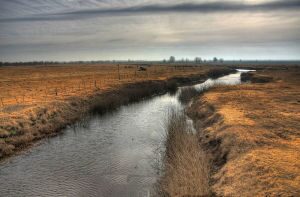
| Humans may have occupied the Southern Cone 14,000 years ago, according to a study* published September 28, 2016 in the open-access journal PLOS ONE by Gustavo Politis from CONICET and the Universidad Nacional del Centro de la Provincia de Buenos Aires, Argentina and colleagues. Previous research has suggested that there were people west of the Andes Mountains at around 14,500 years, and that the Clovis people, a prehistoric Native American group of hunter-gatherers, were not the first humans to arrive in the Americas 13,000 years ago. Now, more recent studies from the Pampas region of Argentina support this hypothesis, and suggest that Homo sapiens, or early humans, arrived in the Americas during a period earlier than the Clovis hunters of North America. The authors of the present study sought to date the earliest human occupation of the Arroyo Seco 2, a rich archaeological site in the Southern Cone, the southern tip of South America. At Arroyo Seco 2, researchers excavated ancient tools, bone remains from a variety of extinct species, and broken animal bones containing fractures caused by human tools. They used radiocarbon dating techniques to determine the age of the mammal bones, and applied microscopic analysis to the specimens. The researchers found limb bones from extinct mammals at the site, which may indicate human activities of depositing and transporting animal carcasses for consumption at a temporary camp. They found that the bones of some mammal species were concentrated in a specific area of the site, which could indicate specific areas of butchering activities. Microscopic examination also revealed that some bones contained fractures most likely caused by stone tools. Finally, the material remains found at the site were dated between 14,064 and 13,068 years ago, and thus the authors hypothesize that the Arroyo Seco 2 site may have been occupied by humans during that time. This timeline, along with other South American sites, indicates that humans may have arrived at the Southern Cone prior to the Clovis people, but after the onset of the Last Glacial Maximum, or last glacial period which took place 19,000-20,000 years ago. _______________________________________ A view in the Pampas region of Argentina, in the Southern Cone of South America. Luis Argerich, Wikimedia Commons ___________________________________________________ While the characteristics of some of these archaeological materials could be explained without human intervention, the combination of evidence strongly suggests human involvement. Humans’ arrival into the Southern Cone 14,000 years ago may represent the last step in the expansion of Homo sapiens throughout the world and the final continental colonization. Source: A PLOS One press release _________________________________________________ _____________________________________________________ |
For premium subscribers and those interested in becoming premium subscribers: An anthology of the best feature stories about human evolution as published in Popular Archaeology over the past several years. Richly illustrated, it offers in-depth treatment on some of the most tantalizing discoveries of recent years. It will be updated as new feature articles are published.
________________________________

______________________________________________
Travel and learn with Far Horizons.
____________________________________________
This richly illustrated issue includes the following stories: Recent findings shedding new light on the whereabouts of the remains of Philip of Macedon, father of Alexander the Great; how an archaeologist-sculptor is bringing bones of the dead back to life; archaeologists uncovering town life at the dawn of civilization; an exclusive interview with internationally acclaimed archaeologist James M. Adovasio about what makes the Meadowcroft Rockshelter prominent in the ongoing search for the first Americans; what archaeologists are finding at the site of the ancient city of Gath, the home town of the biblical Philistine giant, Goliath; and how scientists are redrawing the picture of human evolution in Europe. Find it on Amazon.com.








